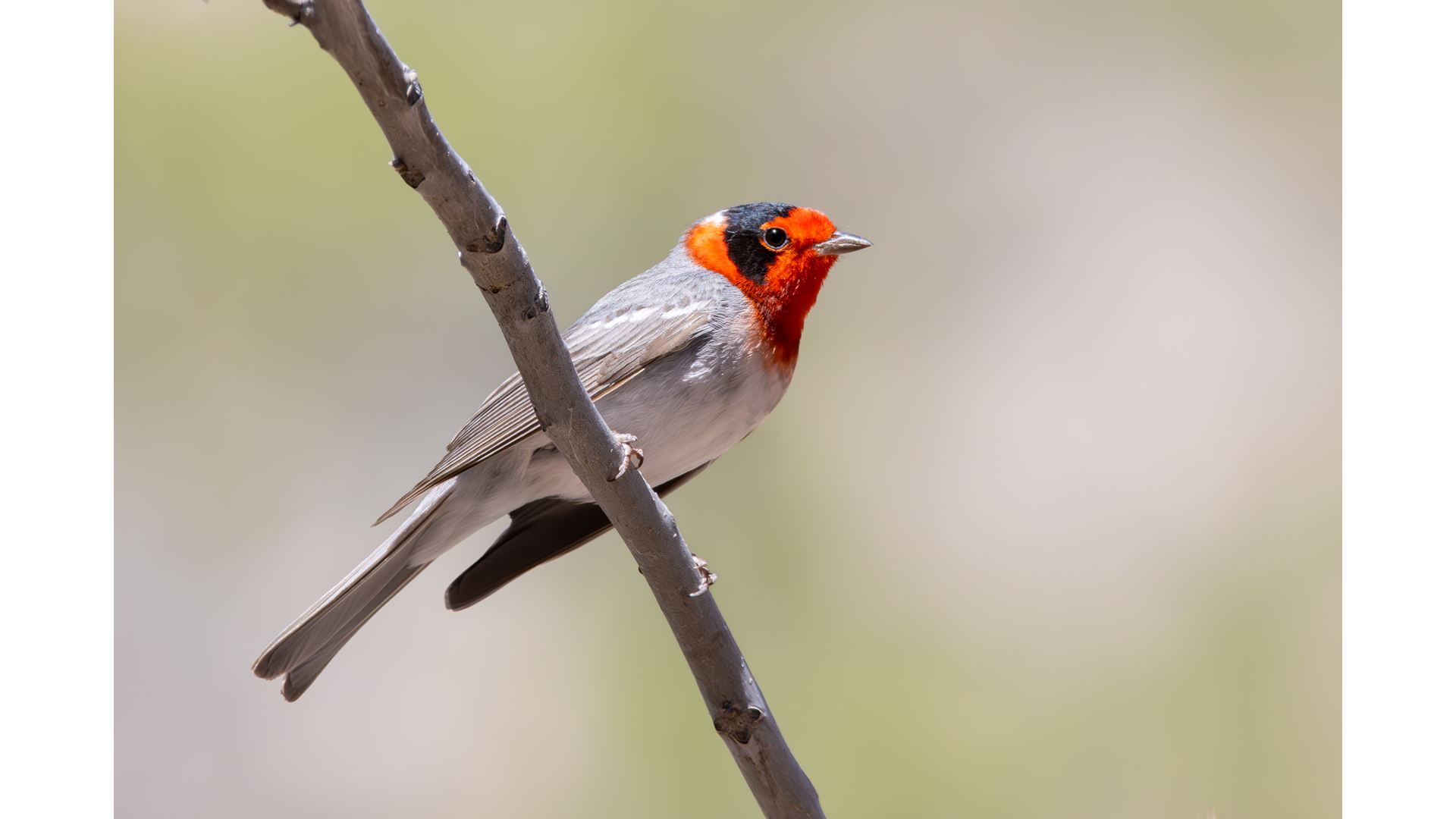When you think of migrating birds, you may picture something like geese flying overhead in their distinctive V-formation. But what about the many species of birds that migrate at night? For these species, researchers rely on indirect observation methods to study their paths, habits and behaviors.
New Mexico State University Ph.D. candidate Dylan Osterhaus authored a review paper on the field of nocturnal flight call monitoring, outlining everything from advancements in technology and research methods, to future applications and current limitations. Osterhaus’s paper was recently published in the premier academic journal Ornithology. It is the first review of this rapidly expanding research area since 2005.
“A lot has happened in the last 20 years in terms of technological advancements, both in the recorders that we have available, how we can store data on those recorders, and the methods that we have to actually process that data,” Osterhaus said. “It seemed appropriate that with all these advancements, a new summary of the field was kind of needed at this point.”
Nocturnal flight call monitoring is a research method that relies on strategically placed microphones to record calls from birds as they migrate through the night. These recordings help researchers to learn more about the paths and behaviors of nocturnally migrating birds, as well as the composition and dynamics of the flocks they fly in. This data is extraordinarily valuable for monitoring migration habits amidst changing climates and human activity. Identifying where and when different species are migrating is a key component in advancing avian conservation efforts.
Osterhaus is co-advised by Martha Desmond, fishery and wildlife sciences professor and department head, and Timothy Wright, biology professor. The combination of Desmond’s lab and Wright’s background in bird conservation and behavioral studies created a natural fit for Osterhaus and his work. “What prompted me to write this paper was the migration biology seminar class that Tim taught a couple falls ago as part of the Avian Migration Program that we have here on campus,” Osterhaus said.
Through a training grant from the U.S. Department of Agriculture, the Avian Migration program prepares graduate and undergraduate students for careers in avian conservation. “We’re having a lot of success with these students; they're going on to jobs with agencies, they're going on to graduate school,” Wright said. “We're really pleased with the progress that the students are making.”
“The Avian Migration Program has been an amazing experience. It’s given me so many opportunities to work with undergraduate students on their research. We just submitted a paper a couple weeks ago with one of these undergraduates as the lead author on it,” Osterhaus said. “As someone that wants to go into academia and mentor students, it’s been awesome to gain this experience early on in my career.”
In addition to mentoring students, Osterhaus is applying his research to practical questions through a partnership with White Sands Missile Range (WSMR). Desmond has been spearheading the collaboration. “We set up a contract with them to start to work on a project that really generated Dylan's work,” Desmond said.
In response to a mass avian mortality event on WSMR, Osterhaus looked into the use of artificial light at night and how that may be impacting migrating birds in the area. “I get to see this whole other side of this conservation field where they’re working for the Department of Defense and in the Ecological Services Unit out there,” Osterhaus said about the WSMR collaboration. “They have all these reasons behind these questions about how they are possibly impacting birds. Seeing those applied questions and how my research can help them has been a great experience.”
The WSMR collaboration to better understand and protect migrating birds is one of many possible applications for nocturnal flight call monitoring research. As Osterhaus sees it, this field holds the exciting potential for researching migration at much larger scales.
“I'm really excited by the thought that we in the near future might be able to have a holistic view of bird migration across the entire continent,” Osterhaus said. “We can combine these sorts of methods like nocturnal flight call monitoring with methods like weather radar, which gives us a better idea of the number of birds passing through. It also can tell us information about how high these birds are migrating off the ground, and how fast they're going. Nocturnal flight call monitoring represents this last little piece in the puzzle that gives us this really holistic view of bird migration at huge scales.”
Read Osterhaus’s review of the state of nocturnal flight call monitoring research in Ornithology here: “A call in the dark: Nocturnal flight calls and their potential to advance the study of avian migration”.
CUTLINE: Red-faced Warbler perched on a branch, photographed by NMSU Ph.D. candidate Dylan Osterhaus. (Photo courtesy of Dylan Osterhaus)
CUTLINE: NMSU Ph.D. candidate Dylan Osterhaus’s review paper “A call in the dark: Nocturnal flight calls and their potential to advance the study of avian migration” is published in premier journal Ornithology. (Courtesy Photo)
CUTLINE: NMSU Academic Department Head of fishery and wildlife sciences Martha Desmond, co-advisor to Dylan Osterhaus. (Courtesy Photo)
CUTLINE: NMSU Professor Timothy Wright, co-advisor to Dylan Osterhaus. (Courtesy Photo)

